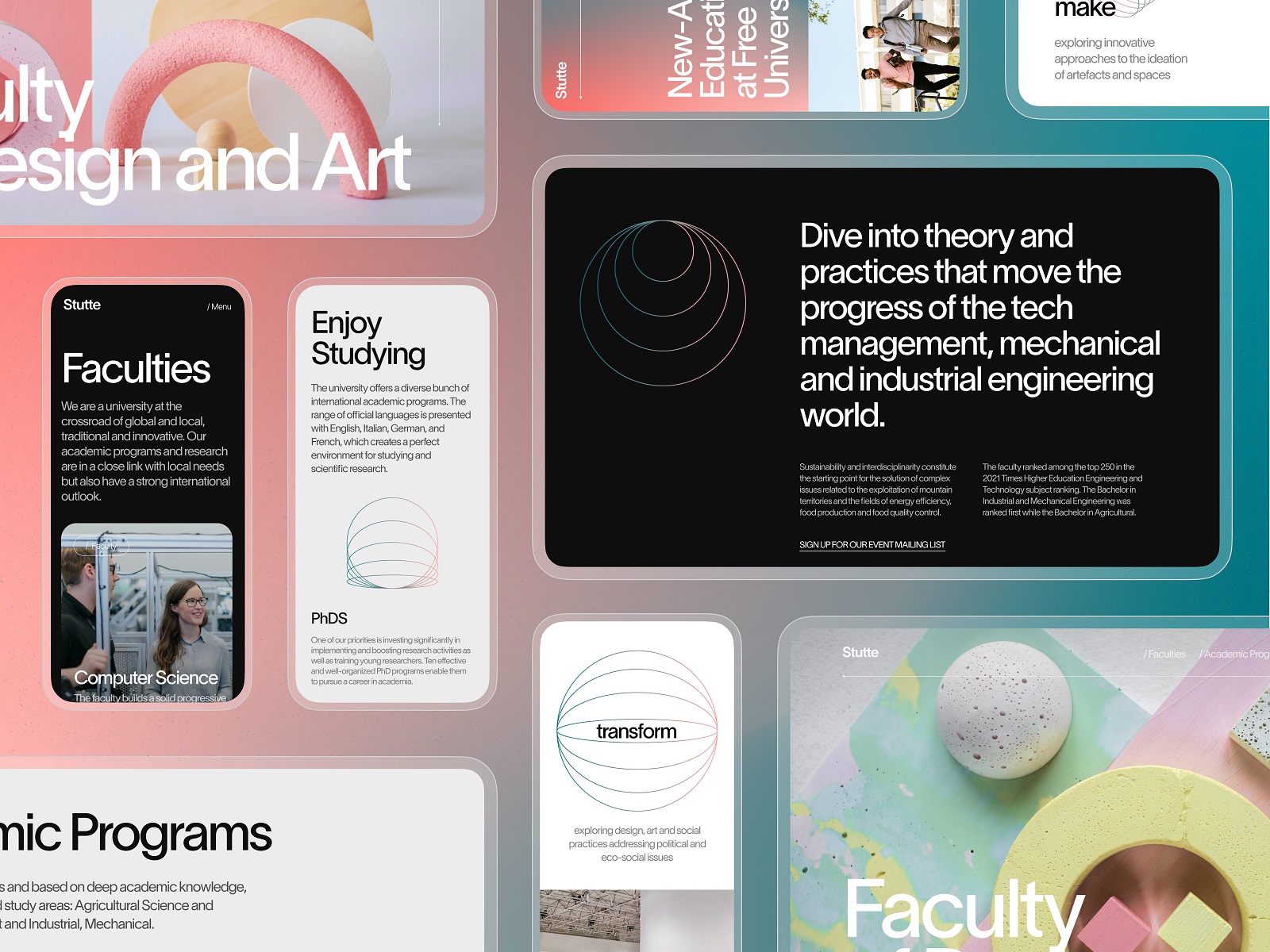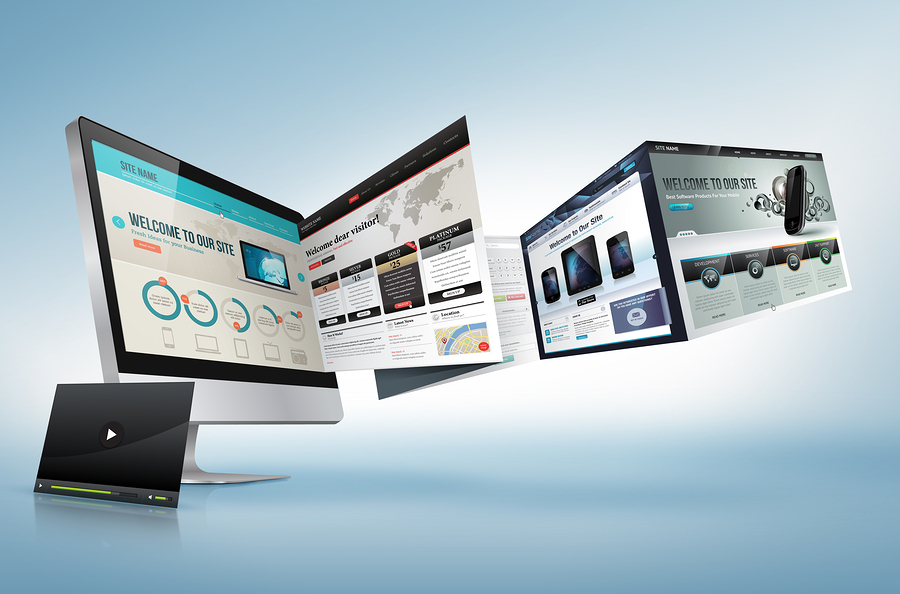Necessary Concepts of Internet Site Layout: Creating User-Friendly Experiences
In the realm of web site style, the production of user-friendly experiences is not simply a visual search but a basic necessity. Necessary concepts such as user-centered design, intuitive navigating, and access work as the backbone of efficient digital systems. By concentrating on individual demands and choices, developers can promote interaction and complete satisfaction, yet the ramifications of these concepts expand beyond plain performance. Recognizing just how they intertwine can dramatically affect a site's total performance and success, triggering a closer exam of their private functions and collective influence on individual experience.

Importance of User-Centered Style
Focusing on user-centered layout is vital for developing reliable internet sites that meet the demands of their target audience. This technique places the customer at the leading edge of the layout process, making sure that the internet site not just operates well but additionally reverberates with users on a personal level. By recognizing the customers' preferences, objectives, and behaviors, designers can craft experiences that promote engagement and complete satisfaction.
Additionally, adopting a user-centered layout viewpoint can lead to boosted ease of access and inclusivity, providing to a diverse target market. By taking into consideration various individual demographics, such as age, technological efficiency, and cultural histories, developers can create web sites that are welcoming and useful for all.
Ultimately, focusing on user-centered style not only boosts user experience yet can also drive crucial organization outcomes, such as boosted conversion prices and customer loyalty. In today's affordable electronic landscape, understanding and prioritizing customer demands is an important success element.
Instinctive Navigation Frameworks
Reliable site navigation is usually a vital aspect in boosting customer experience. Instinctive navigating structures enable users to discover info swiftly and effectively, lowering disappointment and raising involvement. An efficient navigating menu ought to be basic, rational, and regular across all pages. This enables individuals to prepare for where they can locate particular web content, thus promoting a seamless surfing experience.
To produce user-friendly navigation, developers must prioritize clarity. Tags must be acquainted and detailed to individuals, avoiding lingo or ambiguous terms. An ordered framework, with key classifications resulting in subcategories, can better aid users in comprehending the relationship in between different areas of the site.
In addition, integrating aesthetic hints such as breadcrumbs can guide customers with their navigation course, allowing them to conveniently backtrack if needed. The incorporation of a search bar likewise enhances navigability, giving customers route accessibility to web content without needing to navigate through numerous layers.
Responsive and Flexible Designs
In today's electronic landscape, making certain that internet sites function flawlessly throughout different tools is vital for individual fulfillment - Website Design. Adaptive and responsive formats are 2 key strategies that enable this functionality, dealing with the varied variety of screen dimensions and resolutions that customers may come across
Responsive layouts utilize liquid grids and adaptable images, enabling the internet site to automatically change its components based on the screen dimensions. This technique provides a regular experience, where content reflows dynamically to fit the viewport, which is specifically useful for mobile customers. By making use of CSS media queries, designers can create breakpoints that enhance the design for different gadgets without the requirement for separate styles.
Adaptive designs, on the other hand, use predefined designs for particular screen sizes. When an individual accesses the website, the web server finds the tool and serves the suitable design, making certain an optimized experience for differing resolutions. This can bring about much faster loading times and boosted performance, as each design is customized to the device's capabilities.
Both flexible and receptive designs are crucial for enhancing customer interaction and complete satisfaction, inevitably adding to the web site's overall efficiency in meeting its objectives.
Consistent Visual Hierarchy
Developing a consistent visual hierarchy is critical a knockout post for guiding users via an internet site's material. This principle makes certain that info is provided in a manner that is both instinctive and appealing, allowing customers to quickly understand the material and browse. A well-defined hierarchy employs numerous design components, such as size, spacing, comparison, and shade, to develop a clear difference between various sorts of material.

Moreover, constant application of these visual signs throughout the site cultivates experience and count on. Users can swiftly discover to recognize patterns, making their communications much more efficient. Inevitably, a strong visual power structure not just enhances user experience yet likewise improves general website usability, motivating much deeper engagement and assisting in the wanted actions on a web site.
Accessibility for All Individuals
Access for all users is an essential facet of site layout that guarantees everyone, no matter their abilities or disabilities, can engage with and benefit from online material. Designing with accessibility in mind entails applying techniques that fit varied customer demands, such as those with visual, auditory, electric motor, or cognitive disabilities.
One vital guideline is to follow the Internet Web Content Accessibility Guidelines (WCAG), which supply a structure for developing available electronic experiences. This includes utilizing enough shade contrast, offering text options for photos, and making certain that navigating is keyboard-friendly. In addition, using receptive style methods makes sure that web sites work successfully across different devices and screen sizes, further enhancing access.
Another critical factor is the use of clear, concise language that avoids jargon, making material comprehensible for all users. Engaging go to my blog customers with assistive innovations, such as screen readers, calls for cautious attention to HTML semiotics and ARIA (Easily Accessible Rich Internet Applications) duties.
Eventually, prioritizing accessibility not just satisfies legal try this website responsibilities but additionally broadens the target market reach, promoting inclusivity and enhancing customer contentment. A dedication to ease of access mirrors a commitment to developing equitable electronic atmospheres for all users.
Final Thought
Finally, the important concepts of website layout-- user-centered design, user-friendly navigation, responsive formats, constant visual pecking order, and accessibility-- jointly add to the development of easy to use experiences. Website Design. By prioritizing individual needs and ensuring that all individuals can properly engage with the site, developers boost usability and foster inclusivity. These principles not only enhance customer complete satisfaction however additionally drive positive company results, inevitably demonstrating the important relevance of thoughtful site style in today's electronic landscape
These methods give vital insights right into user assumptions and discomfort factors, making it possible for developers to customize the website's functions and content appropriately.Efficient site navigation is usually an important variable in enhancing user experience.Establishing a consistent visual hierarchy is essential for assisting customers via a website's material. Eventually, a solid aesthetic hierarchy not just enhances individual experience yet additionally enhances overall site usability, urging deeper interaction and facilitating the wanted activities on an internet site.
These concepts not only improve user complete satisfaction but also drive positive company end results, ultimately showing the vital relevance of thoughtful internet site design in today's electronic landscape.
Comments on “Website Design for Startups: Key Elements for Growth”